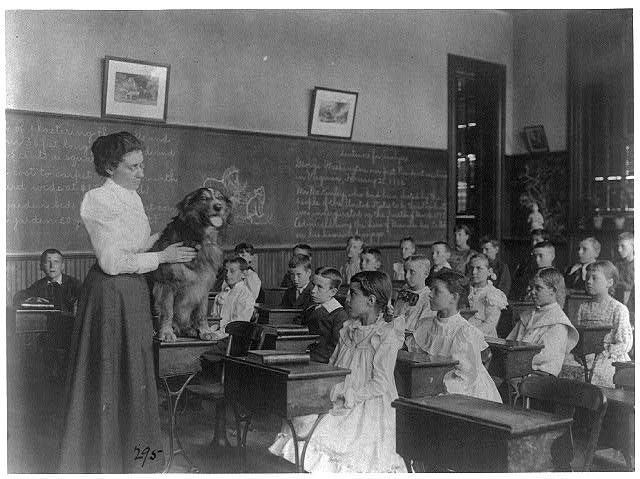Larry Cuban on School Reform and Classroom Practice: An Enduring Puzzle about Teaching in the U.S. (Part 1)
Historians of education often pose puzzling questions about the past. Sure, some historians answer narrow but important questions such as: How and why did Head Start become a national early childhood program in the mid-1960s? Or why did platoon schools spread across the U.S. before World War I?
Answering these questions are not the journalistic five Ws: Who, What, Where, When, and Why. No, such questions as: why the standards, testing, and accountability movement to reform schools surged in the 1980s?–require revealing the context of the locale and the times and by documenting both changes that occurred and continuity of ongoing patterns of schooling.
In my career as a historian of education, I have delved into, skittered around, and tap-danced my way through various answers to questions about policymakers trying again and again to alter what teachers do in their lessons, how teachers changed their teaching over time, the continuity of classroom practices, and school and societal factors that touched teachers’ daily lessons. I do confess that I am a Johnny one-note when it comes to classroom teaching and teachers.
So now that my next book, Confessions of a School Reformer (Harvard Education Press) will appear this year, I am returning to, yet again, a puzzling question about teaching that I have bitten into many times but have not yet been satisfied with the answers I tasted.
That puzzling question is: While classroom teaching has changed since the 1890s yet with all of these changes teaching has remained relatively stable How come?

Why is this question puzzling?
Count the changes that have occurred in teaching. First, consider the dramatic shift that occurred in the upgrading of standards for training and certifying teachers. From needing a high school diploma to teach a century ago to the requirement of a master’s degree and courses in education, subject specialties, and teaching methods, teacher expertise has grown. How teacher dress, how they moved from formality to informality in classroom lessons, how teachers group students, the expanded sources available to teachers to incorporate into lessons–I could go on but the point is clear that who teaches, what is taught, and how lessons unfold have changed over the past century. Yet not enough to satisfy many school reformers.
Consider that critics of schooling who believe that the best form of instruction is student centered rather than teacher-centered have argued for many years that teachers have hardly moved their dominant practices to more learner-driven approaches. Project-based teaching and practices that allow students to make classroom decisions, and curricular content that touches, no, impinges upon their lives, critics have argued, need to be part of daily lessons. Observers of classrooms, surveys, videos, and first-hand accounts by teachers continue to make clear, however, that teacher-directed instruction remains front-and-center in most teachers lessons (see here and here).
Yet, many teachers assert that they use student-directed approaches in their lessons and observers have documented such approaches in their classrooms (see here and here).


So there is some evidence drawn from teacher surveys and observations that teachers, have indeed, slowly and decidedly altered how they teach, albeit seldom to the satisfaction of reformers pressing for student-centered instruction (see here, here and here).
That there has been movement in changing how most teachers teach, especially since the 1960s, that movement–more often occurring in elementary than secondary schools, in some academic subjects (e.g. English and social studies) but not others (e.g., math)–is undeniable. Nonetheless, classroom observers who visit post-pandemic classrooms would continue to see that most classroom lessons are teacher-directed.
What explains this remarkable stability in teacher-directed lessons across time and across grade-levels and schools enrolling children from both affluent and poor families?
Both practitioners and researchers identify specific individual and organizational factors that shape teaching behaviors and account for the constancy in classroom instruction: Teacher beliefs, social expectations, and the age-graded school structure.
I take up each of these in subsequent posts.
This blog post has been shared by permission from the author.
Readers wishing to comment on the content are encouraged to do so via the link to the original post.
Find the original post here:
The views expressed by the blogger are not necessarily those of NEPC.

